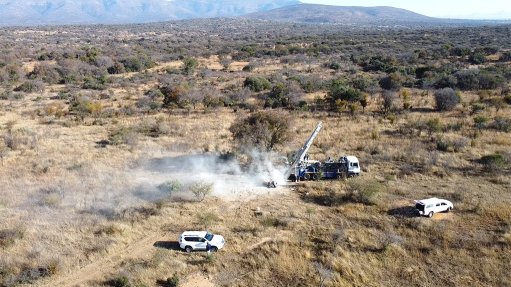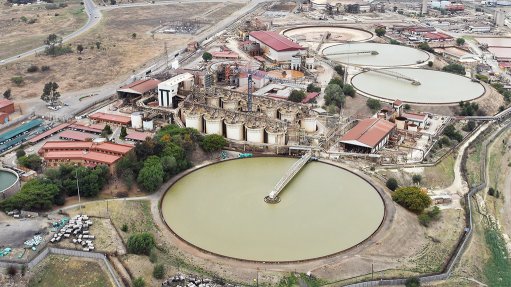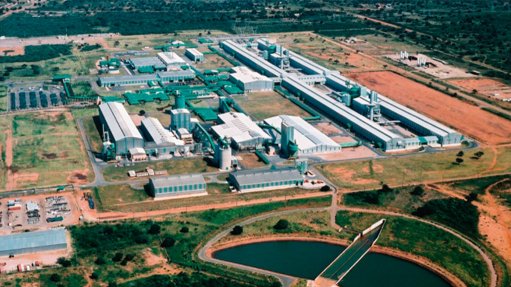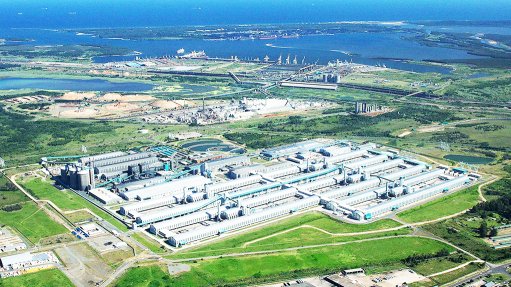Sustainability trends drive circular, lifecycle fabrication

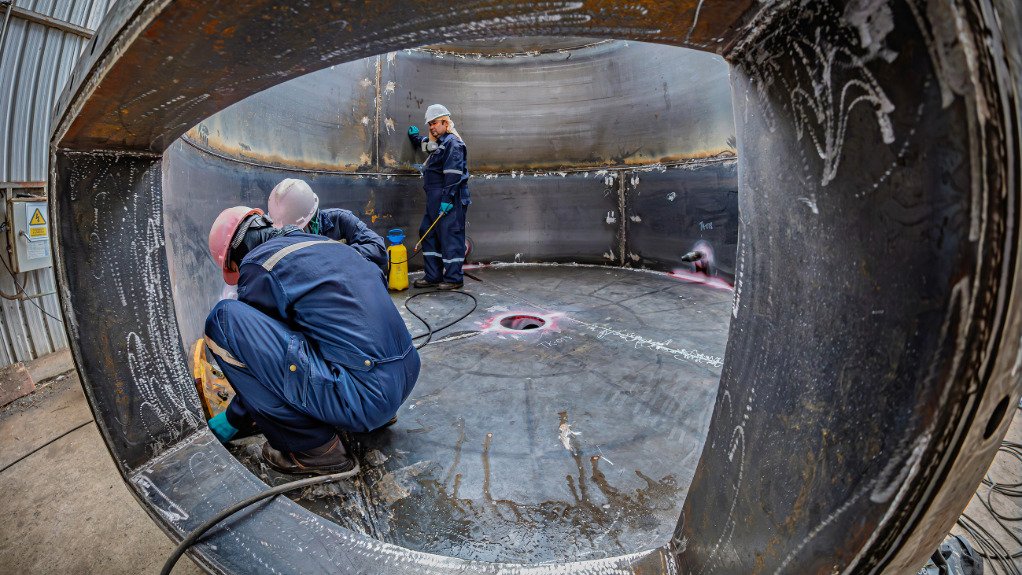
INTEGRATING SUSTAINABILITY While recycled steel and reclaimed alloys adoption within pressure-boundary components remains subdued, progress is being made to ensure more sustainable manufacturing
Aligned with sustainability trends, South African fabricators are moving beyond commitments toward measurable implementation in applying circularity and life-cycle design principles, ensuring they are better positioned for resilience and competitiveness.
Given that steel continues to underpin South Africa’s pressure vessel and tank manufacturing, its high recyclability remains central to the sector’s sustainability trajectory, says Engineering Council of South Africa Investigation Committee chairperson and South African Institution of Chemical Engineers council member Dr Natisha Gareeb.
“Steel recycling and greensteel pathways are now core to material strategy, with major mills scaling scrapfed furnaces and circular production models,” Gareeb explains, adding that industry reporting between 2024 and 2025 highlights a clear national shift towards lower-carbon steelmaking.
“Industry data shows the majority of endoflife steel is recovered, while producers are expanding scrapfed, minimill and electric arc furnace capacity to lower embodied emissions,” she adds.
At project level, modular skids and bolted assemblies designed for disassembly and reuse, are being deployed across brownfield sites, reducing scrap generation, shortening turnaround times and reducing embodied emissions per installation.
At the same time, in the manufacturing sector, solvent recovery on finishing lines and plate-offcut reclamation programmes are reducing waste streams and returning value to secondary fabrication.
Gareeb explains that while large-scale case studies are still emerging, the cumulative impact of these practices is significant. Whole-life costing and end-of-life planning are becoming more common in procurement decisions, with clients and financiers increasingly requiring demonstrable recyclability metrics.
“These choices reduce total cost of ownership, shorten downtime for major repairs and extend the service life of pressure vessels, tanks and heat exchangers,” Gareeb explains.
Additionally, where specifications permit, mill-certified recycled steel and reclaimed alloys are increasingly used in non-pressure structural elements and secondary containment systems. This shift has delivered measurable reductions in embodied carbon for supporting structures and ancillary tanks.
Meanwhile recycled steel and reclaimed alloys adoption within pressure-boundary components remains subdued, pending further lifecycle testing and certification. However, Gareeb notes that progress is ongoing.
There is also a growing shift towards modular exchangers and bolted assemblies rather than welded monolith designs, which simplifies repairs, speeds up component replacement and reduces scrap generation.
While adoption remains uneven, client-driven sustainability standards and lifecycle-based procurement are steadily embedding these practices across the fabrication value chain, Gareeb says.
Digitalisation
Meanwhile, digitalisation is going beyond automating tasks and is reshaping how critical assets, such as pressure vessels, tanks and heat exchangers, are designed, managed and maintained, says Gareeb.
In South Africa, the integration of computer-aided design and computer-aided manufacturing systems alongside parametric 3D modelling and finite-element analysis are shortening design cycles and identifying risks before fabrication begins, thereby mitigating costly rework.
Linked with digital procurement and shop-floor management systems, these tools improve coordination and embed full traceability as standard practice.
In operational applications, Internet of Things (IoT) sensors and real-time analytics are replacing time-based inspections with condition-based, predictive maintenance. This shift enhances uptime, extends asset life and lowers lifecycle costs. Further, these data systems improve safety and compliance by producing verifiable, continuous evidence.
“The outcome is practical: higher-quality fabrication, smarter maintenance choices and better commercial resilience,” says Gareeb, adding that this helps South African fabricators to compete in the global marketplace.
In practice, across the country’s heavy industries, technologies such as digital twins, IoT-enabled monitoring and AI-driven predictive maintenance are shifting asset management from reactive to proactive.
One such example is embedded sensors, which continuously track temperature, vibration and pressure, which is then fed to condition-monitoring systems that detect anomalies early to facilitate prioritised, data-driven interventions.
Meanwhile, predictive maintenance models, underpinned by AI analytics, forecast failures and optimise service intervals.
Gareeb adds that some models achieve near real-time accuracy in predicting heat-exchanger fouling and remaining useful life, while digital twins serve as safe environments for “what-if” scenarios.
“Such models enable engineers to validate maintenance strategies and make process adjustments virtually, reducing production disruptions,” she explains.
On the fabrication floor, automation and robotic welding, combined with digital traceability, deliver significant improvements in productivity, consistency and weld integrity. These improvements reduce rework, enhance as-built data quality and underpin predictive maintenance strategies.
Robotic welding cells, computer numerically controlled (CNC) plasma and laser cutters, along with automated inspection suites, are also increasingly being deployed for precision, high-repeatability tasks where cycle-time and quality gains are immediate and measurable. These tasks include jigs, weld preparation and skirt and knuckle welds.
Further, many workshops now operate hybrid production lines, combining CNC cutting and robotic welding for high-volume work while reserving skilled manual welders for complex or bespoke joints.
However, Gareeb notes that local fabricators face practical barriers in adopting digitalisation and automation technologies. These include high upfront costs for robots, sensors and digital-twin platforms, alongside difficulties in retrofitting legacy equipment, all of which is compounded by shortages of skilled robotics programmers, data scientists and advanced technicians.
The most effective response to this has been phased, risk-aware adoption. Aligned to this, companies are prioritising high-volume or bottleneck operations where automation yields the fastest returns as well as using pilot digital-twin proofofconcepts to demonstrate value before scaling.
Article Enquiry
Email Article
Save Article
Feedback
To advertise email advertising@creamermedia.co.za or click here
Press Office
Announcements
What's On
Subscribe to improve your user experience...
Option 1 (equivalent of R125 a month):
Receive a weekly copy of Creamer Media's Engineering News & Mining Weekly magazine
(print copy for those in South Africa and e-magazine for those outside of South Africa)
Receive daily email newsletters
Access to full search results
Access archive of magazine back copies
Access to Projects in Progress
Access to ONE Research Report of your choice in PDF format
Option 2 (equivalent of R375 a month):
All benefits from Option 1
PLUS
Access to Creamer Media's Research Channel Africa for ALL Research Reports, in PDF format, on various industrial and mining sectors
including Electricity; Water; Energy Transition; Hydrogen; Roads, Rail and Ports; Coal; Gold; Platinum; Battery Metals; etc.
Already a subscriber?
Forgotten your password?
Receive weekly copy of Creamer Media's Engineering News & Mining Weekly magazine (print copy for those in South Africa and e-magazine for those outside of South Africa)
➕
Recieve daily email newsletters
➕
Access to full search results
➕
Access archive of magazine back copies
➕
Access to Projects in Progress
➕
Access to ONE Research Report of your choice in PDF format
RESEARCH CHANNEL AFRICA
R4500 (equivalent of R375 a month)
SUBSCRIBEAll benefits from Option 1
➕
Access to Creamer Media's Research Channel Africa for ALL Research Reports on various industrial and mining sectors, in PDF format, including on:
Electricity
➕
Water
➕
Energy Transition
➕
Hydrogen
➕
Roads, Rail and Ports
➕
Coal
➕
Gold
➕
Platinum
➕
Battery Metals
➕
etc.
Receive all benefits from Option 1 or Option 2 delivered to numerous people at your company
➕
Multiple User names and Passwords for simultaneous log-ins
➕
Intranet integration access to all in your organisation










